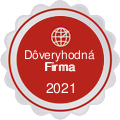Účasť superoxidu na baktericídnych účinkoch negatívnych iónov vzduchu na Staphylococcus albus /angl./

Superoxide involvement in the bactericidal effects of negative air ions on Staphylococcus albus
Účasť superoxidu na baktericídnych účinkoch negatívnych iónov vzduchu na Staphylococcus albus
The physical nature of small air ions is well established and it is recognised that they can produce a variety of biological effects /ref. 1/. However, in only a few instances have any underlying biochemical changes been detected /refs. 2–4/.
Theoretically, one can consider the hydrated Superoxide radical anion (O2−) (H2O)n with n≃4–8 as a likely candidate for a biologically active species of negative air ion /ref. 5/. The chemical and biological reactivity of Superoxide is high /ref. 6/ and includes a leading role in bacterial killing caused by radiation /refs 7,8/, in which Superoxide dismutase (SOD), an enzyme that catalyses the reaction: O2−+O2−2H→H2O2+O2 protected markedly.
Other studies have also demonstrated the bactericidal effect of O2− /refs 9–11/.
Inasmuch as the bactericidal action of small negative air ions has been repeatedly confirmed, we decided to test for the involvement of O2− in this phenomenon by evaluating the protective effect of SOD. Our results show strong O2− involvement in negative air ion bacterial kill.

